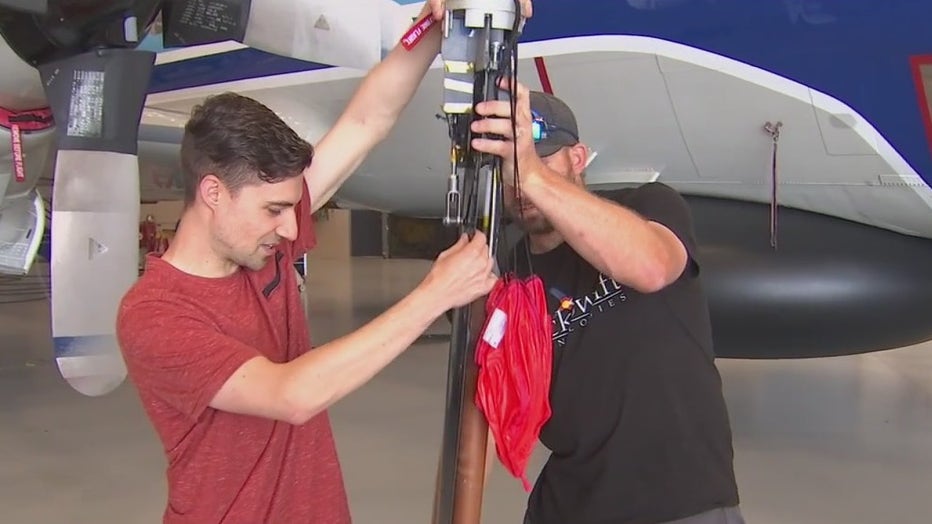New NOAA research takes hurricane hunting to new heights
LAKELAND, Fla. - Researchers at the National Oceanographic and Atmospheric Administration’s operations center in Lakeland are testing new technology that could help forecasters more accurately predict a hurricane’s movement and intensity.
They are testing two air-launched, uncrewed, aircraft systems (UAS), which are like drones, that gather data.
On Wednesday, researchers performed the first in a series of three flights to prove they can safely launch and deploy an unmanned aircraft from a P-3 plane.
They also hope to be able to control the unmanned aircraft from the P-3 from inside a storm. This would give researchers important data to add to the hurricane model while simultaneously collecting information from the P-3.
READ Lakeland-based NOAA fleet to get new weather-tracking planes
The UAS can fly in lower altitudes and areas that are too dangerous for people to fly, providing never-before-seen data.

"These unmanned aircraft, usually you think about places where you wouldn’t want to send people, these are going to be very low altitude. When we hit a big updraft or down draft in the P3, I don’t want to be 500-1000 feet above the surface even though that information is so crystal. This innovative research is giving us the ability to collect that and so this week’s flight is really testing to make sure we’re going to be able to do it safely," stated Becky Shaw, hurricane hunter and test pilot.
READ NOAA hurricane hunter retires after 42-year career: ‘Such a thrill’
The unmanned aircrafts can fly from 1-3 hours in a storm while the hunters are flying with it, allowing researchers to compare the data.
The new, uncrewed, aircraft systems are expected to be used in a hurricane environment for the first time this season.

